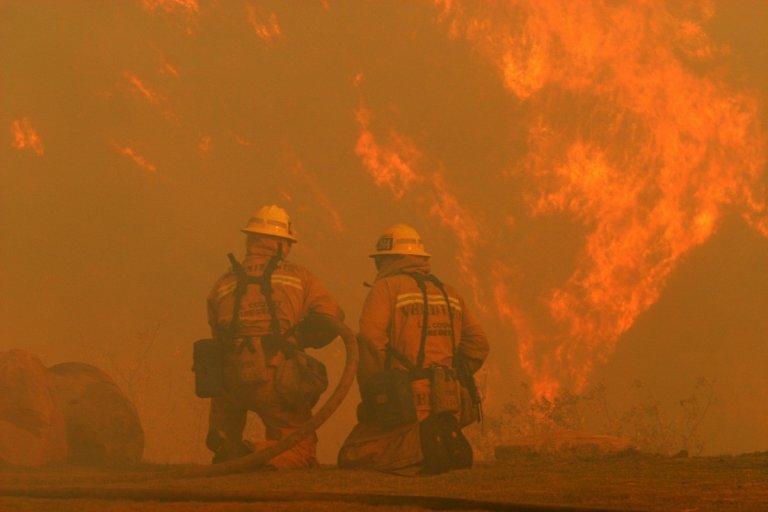
In 2015, then-US President Barack Obama declared “no challenge poses a greater threat to our future and future generations than a change in climate”.
The threat is real and action is urgent. Reports are showing the devastating consequences that can come from the erratic weather conditions we’re increasingly experiencing, from dying crops to mass displacement of people.
And there’s not much time left before the temperature of the Earth soars more than 1.5 to 2-degree Celsius from pre-industrial levels; the levels at which scientists say the damage will then be irreversible. The Climate Clock estimates we have around 14-26 years before we hit 1.5 and 2 degree celsius respectively.
Ban Ki-Moon, the eighth Secretary-General of the United Nations warned that we are the “last generation that can put an end to climate change”.
Out of all this, Environmental Science emerges as one of the most compelling STEM subjects you can enrol in at university today.
Described as the science of physical phenomena in the environment, it is a multi-disciplinary field that draws from numerous traditional sciences including biology, ecology, chemistry, geology, engineering and physics. It also draws on the humanities as well, including economics, political science, anthropology, history, law, sociology and even psychology.
A programme in environmental science is one that “focuses on the application of biological, chemical, and physical principles to the study of the physical environment and the solution of environmental problems, including subjects such as abating or controlling environmental pollution and degradation; the interaction between human society and the natural environment; and natural resources management,” according to the National Center for Education Statistics in the US.
This interaction between man and nature takes centre stage in this subject.
“Environmental science is, in its broadest terms, a branch of science that seeks to understand the many ways that we affect our environment, and the many ways we can address this issue,” wrote Daniel D Chiras, adjunct professor of the Environmental Policy and Management programme at the University of Denver, in his textbook Environmental Science.
Its notably multi-disciplinary nature, ensuring issues like climate change are fully understood. For example, given the extremely polarising effect hot-button issues like climate change have on the US population, studying both the scientific and social side of the problems result in a more nuanced learning outcome than purely technical study.
49% of Trump supporters care not too much or not at all about climate change: https://t.co/HPmL385tJh pic.twitter.com/eOaAdvWdAN
— Pew Research Fact Tank (@FactTank) November 11, 2016
Emphasis on the humanities is what sets it apart from subjects like Environmental Engineering. Though there are overlaps with Environmental Science (such as the goal to protect humanity from adverse environmental factors), Environmental Engineering, as its name goes, will be more geared towards designing, calulating and processing data, as opposed to understanding and investigating why certain environmental issues occur.
Get ready to get your hands dirty
One of the leading universities for this subject is the University of California, Berkeley, an institution that dominates the annual QS subject rankings for Environmental Sciences. Stanford and the Massachusetts Institute of Technology (MIT) follow at second and third place, respectively. (The top three in Times Higher Education‘s ranking for the subject “Geology, environmental, earth and marine sciences” are Princeton, Harvard and Stanford).
When it comes to what Berkeley (and other universities offering Environmental Science) teaches, it’s more about what current Californian residents are facing, like the recent deadly wildfires and the dangerous floods to come soon, than about tired stereotypes of the major focusing trees and recycling.
At Berkeley, a sample programme plan for students planning to major in this subject starts with Chemistry and Math (four unites each) in the first year, followed by Biology and Social Science (four units each) in their second year. They also complete their Environmental Science, Policy and Management core subjects during these two years.
In their third year, they take on modules on Statistics, American Culture (if needed) and Human Environmental Interaction. The final year concentrates on electives in areas of their interest, as well as research methodology and environmental modeling to prepare for the senior research thesis seminar.
The full sample programme plan can be found here.
This year-long course, the capstone of the major, is where students “learn how to formulate testable hypotheses about biological, physical, or social patterns and processes associated with an existing or potential environmental problem, collect data to evaluate their hypotheses, and present their results in a professional manner.”
“This experience fosters the development of critical and objective thinking, a skill that will help ensure the credibility of their future work on environmental issues,” Berkeley’s website states.
Fieldwork is a key feature of programmes for this subject. This is how environmental scientists develop knowledge, through accurate observation and recording in the field and other forms of hands-on learning such as laboratory work and team-based projects
All these lead to a skill set that are highly transferable to a variety of roles and different working environments. Graduates can find and fit into such as consultant, educationists, engineers, managers, marine biologists, sustainability consultant, recycling officer, waste management officer, water quality scientist, etc.
According to the Higher Education Academy: “In particular, the abilities to think through issues, analyse situations and problems and come up with creative solutions, and to work with others in sometimes difficult and tight timeframes, and unfamiliar environments, are familiar skills to Environmental Scientists.
“As a result, they have a highly desirable suite of skills which are of a premium to all types of organisations.”
Graduates from developing nations, in particular, can find themselves highly in demand as the most populous nations in Asia like India, Pakistan, the Philippines and Bangladesh are ranked as the most vulnerable to climate change.
Liked this? Then you’ll love…
The environment is collapsing – can higher education save it?
Be part of the sustainable future with a degree in environmental science







